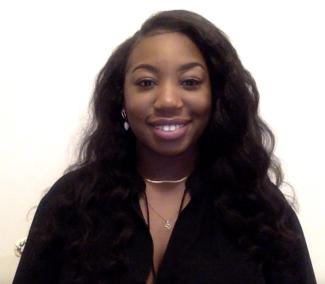Authors: Arrthy Thayaparan and Alex Lukey (Blog Coordinators) || Interviewing: Cindy Kalenga, BSc, PhD/MD candidate, University of Calgary
Published: July 26th, 2021
Pursuing women’s health was a no-brainer for Cindy Kalenga. Finding answers to concerns faced by the women in her life, her community, and even by herself was the obvious choice when she decided on her path as a M.D./Ph.D. candidate at the University of Calgary’s Cumming School of Medicine.
For this month’s Behind the Science, we speak with Cindy to learn more about her research journey as a future leader in women’s cardiovascular health and as an advocate for the inclusion of minorities in the sciences.
How did you become interested in the sciences and the work you do now?
I think I've always had an interest in science, I completed my undergraduate degree in biomedical science at York University. I then moved to Calgary where I started working for the Primary Care Network assisting family physicians with chronic disease management. I focused mainly on things like diabetes, hypertension and mental health.
After working for a year, I decided to pursue a graduate degree. I was interested in cardiovascular sciences as it had some overlap with my previous work. I ended up finding my research supervisor, Dr. Sofia Ahmed who investigated female-specific cardiovascular risk factors which I thought was really interesting!
Why women’s health?
When I was introduced to research, I noticed a huge disparity in studies that included females. Two thirds of clinical research is conducted in males and applied to both sexes; as you can imagine, some treatment strategies don’t completely translate over.
When we look even further at research among racialized minorities such as a black women, the data is very scarce. So a lot of my interest and passion stemmed from advocacy within women and racialized minorities as this is an opportunity to better support the health of Canadians and people globally.
What have you found through your research?
My research investigates the use of exogenous estrogen and cardiovascular markers among women. In young women, we investigate birth control use and in post-menopausal women, we study hormone therapy. Our preliminary data indicates that oral uses of estrogen may be associated with stiffer arteries and potential increases in risk for future cardiovascular risk.
This data is very important as women ingest these hormones for many years, even several decades, and so any incremental increases in cardiovascular risk may have important impacts down the line. My research provides women and healthcare professionals the information they need to make informed decisions about treatment strategies.
More longitudinal studies are required before we can make recommendations to clinical practice, however, our results suggest that women should opt for non-oral forms of birth control and estrogen therapy whenever possible, as this may be associated with lower cardiovascular risk.
Do you think there is enough minority representation in the sciences?
I think we all know what the answer to that is; no there's not enough representation.
As a black woman pursuing a combined M.D. and Ph.D. degree, I have encountered very few minorities in leadership positions or as professors within my educational training. Representation is very important as it brings new ideas to the table and helps combat racial bias.
The lack of representation also impacts the amount of research that's done in that community. Often researchers are motivated to advocate for diseases that they've personally experienced or seen within their family and communities. So, if you don't have enough black researchers there's not enough people studying topics that predominantly impact black people. They also have the cultural competency needed to engage with their own community and mobilize them to participate in research.
For instance, there are alarming racial differences in the material mortality rates. Black women are between 2 to 6 times more likely to die from complications during pregnancy compared to their white counterparts. Furthermore, black women are more likely to develop breast cancer at a younger age and it tends to be more aggressive.
You can see how advantageous it is to have researchers who feel personally impacted by these statistics as it would motivate them to investigate this further. I'm interested in women's health and that of racialized minorities, because that's me, that's my sister, those are my family members.
On a final note, what do you hope for the future of your industry?
It’s always important to recognize the good work done by those who came before us. Whether that work was done only in males, we have developed ground breaking treatment strategies because of it. What I’m proposing is that research be expanded to other communities to foster innovation and better health outcomes for all Canadians.
It's always about providing racialized minorities a seat at the table. Finding novel ways to encourage minorities to pursue careers in research and medicine as well participate in research studies is the goal.
